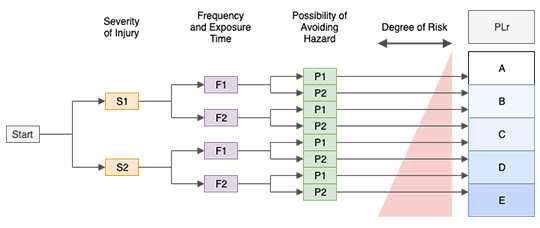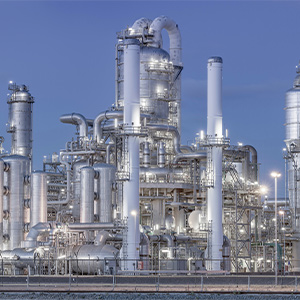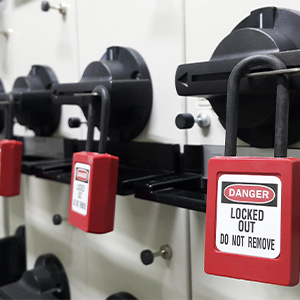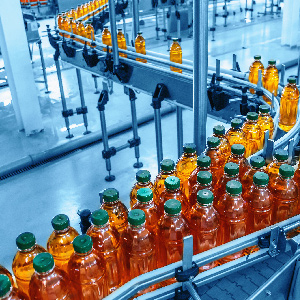ISO 13849 Performance Levels
The international standard ISO 13849 was revised in 2006 to take account of developments in machine safety, more specifically those parts of machine control systems that are related to safety functions. The revision was made primarily to include such semiconductor components as MOS-FETs and transistors, which represented the shift away from hard wired control methods into software control systems. This required different types of assessment of mechanical safety standards to be conducted, according to component functions and performance reliability, commonly known as functional safety.
Safety functions must include any designated action of the machinery having an effect that directly protects any operator using the machine. Important process control safety functions include temperature and speed limiting controls. There are also some important complementary functions for protecting workers, such as emergency stops. These are sometimes left out of specifications because they usually kick in only after any hazard has occurred. In this instance, the safety function is not directly protective, but is nonetheless necessary to the safe functioning of the machine.
PLr and PL (ISO 13849-1:2006)
ISO 13849-1:2006 introduced the idea of a standard for performance levels (PL). This expressed the reliability of a control system's safety-related parts as a quantitative value, including their failure rate and diagnostic coverage. Each PL value defines the ability of such safety-related components to perform a given safety function within categories of foreseeable conditions. These range from degrees of severity to frequency of occurrence, and the possibility of avoiding or mitigating damage. These three parameters are used to determine the required performance level (PLr) for every safety function carried out by a control system's safety-related parts:
The PLr value is thus used to specify and achieve the amount of risk reduction required by each safety function. This means that the PL of any control system's safety-related components must equal or exceed its PLr.
SSeverity of Injury
- S1: Slight
- S2: Serious (such as irreversible injuries and death)
FFrequency and Exposure Time
- F1: Seldon-to-less-often and/or exposure time is short
- F2: Frequent-to-continuous and/or exposure time is long
PPossibility of Avoiding Hazard
- P1: Possible under specific conditions
- P2: Scarcely possible
How to Choose the Right Performance Level
The safety requirements of any control system are defined in accordance with the degree of risk involved. For a machine to be effectively guarded by a safety gate, for instance, any and all hazardous machine movements must immediately be terminated if the safety gate is opened. The risk of human injury and/or machine damage would be very high if the machine were able to start itself up again while the safety gate remains open, so there must be no possibility of this happening.

The PL of any given hazardous situation is quantified in five levels, from a to e, based on the predicted Probability of dangerous part Failures per Hour of operation (PFHd). At PL a (>=0.001% to >0.01%), the contribution of the control function to reducing risk is very low. At median PL c (>=0.0001% to >0.0003%) the control function has a greater effect on reducing risk, while at PL e (>=0.000001% to >0.00001%) the control function makes its greatest contribution to risk reduction. These levels can vary depending on the reliability and structure of any particular technology, but in general the risk graph below can be used to determine the PLr for the safety function described.
The PL standard is used to simplify the numbers, and avoid the precision bias that might occur if levels were calculated according to the fine nuances of PFHd. This bias occurs with our increasing ability to compute numbers in minute quantities, which leads to a misconception that the quantity itself is very precise. The issue in this case is that these numbers only represent probabilities, and these probabilities themselves are extremely minuscule.
Categorising these probabilities of failure into PLs eliminates precision bias. By reducing the huge range of apparently precise quantities into a small group of broader levels, we can operate within a believable reality of prediction, to improve machine safety functions.
Get More From Rowse Straight To Your Inbox




